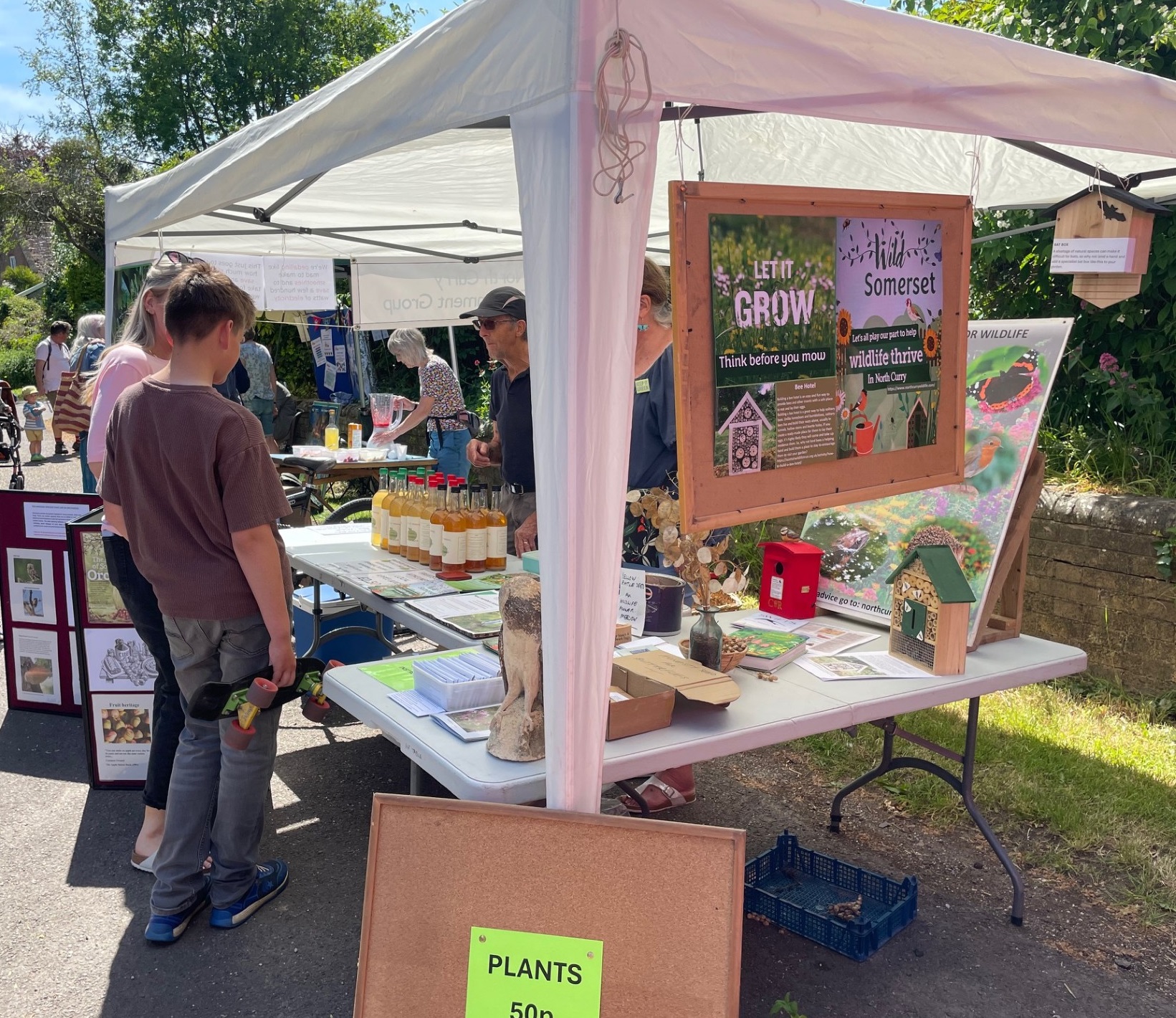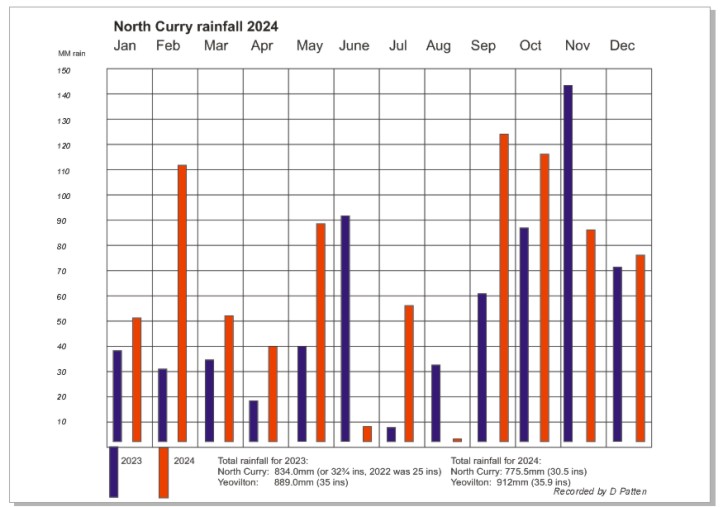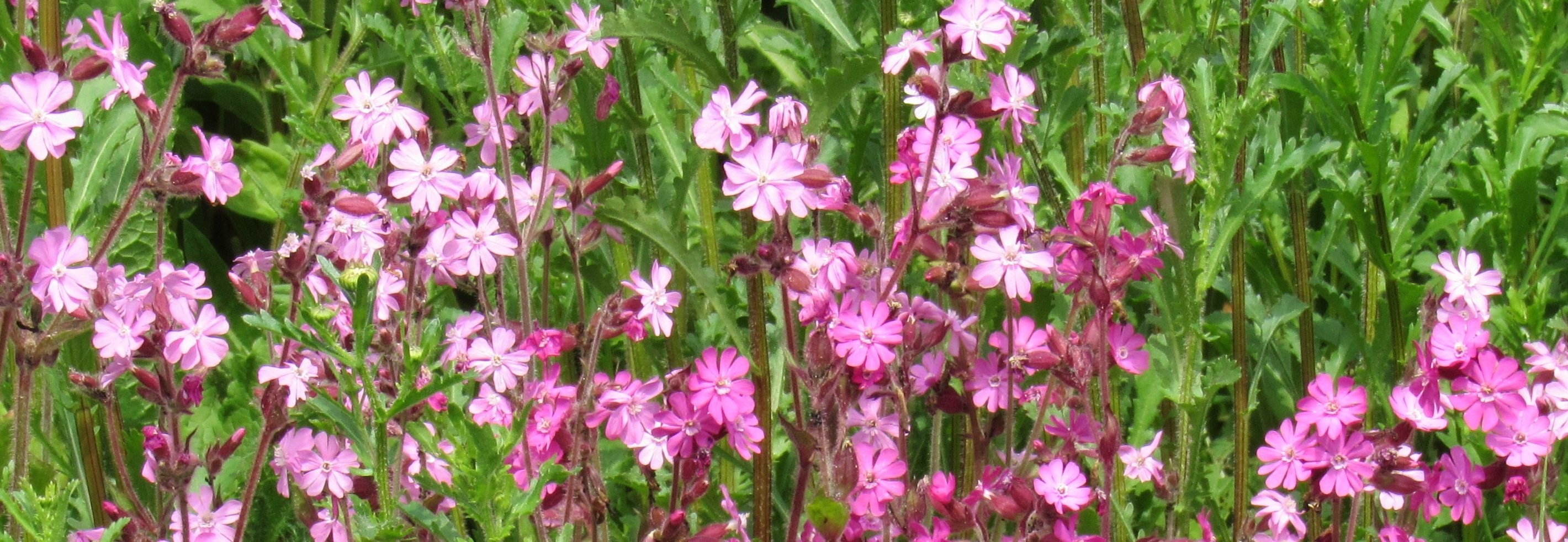 Hawthorn blossom at the woodland (photo: Sue Ashton, 2023)
Hawthorn blossom at the woodland (photo: Sue Ashton, 2023)
North Curry Environment Group formed in 2023 as an amalgamation of North Curry Wildlife Group and Climate Action Athelney.
The main focus of this website is the wildlife of North Curry, and particularly of the Community Woodland at North Curry’s White Street Sports Ground, but other areas around the village are included (see the Places section).
The Projects section shows what we are doing to help wildlife in North Curry, while the Gardening section gives advice on how to encourage wildlife in our own gardens.
Our Species pages contain information about some of the plants and wildlife to be found at the Community Woodland throughout the year, as well as other areas of the village.
See also posts on our X account for news or recent wildlife sightings: www.x.com/ncurrywildlife
If you have any sightings to report, do be in touch via the Contact Us page.
LATEST NEWS
Stall at the May Fair, Saturday 10 May, 2-5pm

North Curry Environment Group stall at the May Fair, 10 May 2025 (photo: Phil Holms)
It was a lovely afternoon with crowds of visitors.
We had numerous people show an interest in our stall and many useful conversations about wildlife gardening were had, predominantly with young parents. We gave away about 40 packets of wildflower meadow seeds, and several of honesty seeds and yellow rattle seeds.
The wildflower meadow seed packets include:
Annuals: Common poppy, Corncockle, Cornflower, Corn chamomile, Corn marigold.
Perennials: Agrimony, Betony, Bird’s-foot trefoil, Black medick, Common knapweed, Cowslip, Great burnet, Lady’s bedstraw, Meadow buttercup, Meadow cranesbill, Meadow vetchling, Musk mallow, Oxeye daisy, Pepper saxifrage, Ragged robin, Ribwort plantain, Rough hawkbit, Selfheal, Tufted vetch,Yarrow, Yellow rattle.
Grasses: Common bent, Crested dogstail, Meadow fescue, Meadow foxtail, Quaking grass, Red fescue, Sweet vernal grass.
We sold all our bottles of apple juice and could have sold more, and 20 plus youngsters had a go on the smoothie-making bike – and the vicar too!
Display at the Village Shop, 1 to 15 March 2025
We had a display in the village shop window from 1 to 15 March. We asked people to Think Globally and Act Locally. And also to consider doing what they could in their own gardens for wildlife. There is plenty of advice in the Gardening section of this website. Just click on the Gardening button on the task bar above.
 Shop window display to Think Globally, Act Locally, 1-15 March 2025
Shop window display to Think Globally, Act Locally, 1-15 March 2025
RAINFALL STATISTICS
Dave Patten has sent us the rainfall statistics he recorded for 2024. His graph below compares the figures with 2023 and show some interesting variations.

Red campion at the Community Woodland (photo: Sue Ashton, 2023)
